- 2 号 p. 51-
- 1 号 p. 1-
- |<
- <
- 1
- >
- >|
-
SOMA DAS, MD. KUTUBUDDIN HALDER, AMIT BANDYOPADHYAY2021 年50 巻1 号 p. 1-17
発行日: 2021年
公開日: 2021/11/30
ジャーナル フリーAnecdotal literature has suggested creative individuals sometimes use kinaesthetic movement to help overcome constrains to their creative thoughts. Based on anecdotal records, the present cross-sectional study was aimed not only to evaluate the physical fitness status, verbal and non-verbal modes of creative thinking in adolescent females belonging to low, medium and high socioeconomic strata in Kolkata, India, but also to explore the association of physical fitness with verbal and non verbal creativity in this population. The study was conducted on one hundred and thirty-one (131) female adolescent participants studied at XIth standard in some Kolkata-based schools of West Bengal, India. The study evaluated the relationship of physical fitness with verbal and non-verbal creativity. Different parameters of physical fitness and verbal and non-verbal creativity were assessed by standard methods. Results revealed students of the high socioeconomic group had the highest score in non-verbal creativity. The low socioeconomic group had the highest score in verbal creativity. Physical fitness parameters such as maximum oxygen uptake capacity (VO2max) or muscular flexibility had a significant positive correlation with non-verbal creativity. Body weight, body mass index (BMI), body surface area (BSA), mid-thigh skinfold and abdominal skinfold showed significant negative correlations with the non-verbal originality. VO2max, agility and flexibility showed a positive correlation with the composite score of non-verbal creativity. The study recommended some means to achieve physical fitness which in turn might lead to better achievement of verbal and non-verbal creative abilities in the studied population.
抄録全体を表示PDF形式でダウンロード (1009K) -
MAKIKO KOUCHI, MASAAKI MOCHIMARU2021 年50 巻1 号 p. 19-28
発行日: 2021年
公開日: 2021/11/30
ジャーナル フリーThe aim of this study was to assess the range and pattern of shape deformation in head scans due to the presence of hair. Homologous models of head with and without hair were obtained from 9 Japanese males, and “hair” model was created for each participant. “Hair” model of each participant was added to average homologous model without hair and obtained 9 models were analyzed using multidimensional scaling (MDS) and principal component analysis (PCA). The results of MDS and PCA were similar: one size factor and some shape factors were obtained, and hair-related deformation was found to be non-uniform. The maximum thickness of the “hair” was approximately 9 mm on average at the top of the head, and thinner at the side of the head. The plausible range of deformation was estimated in the form of virtual “hair” shapes on an ellipse containing 68% of the subjects in a distribution map, which was based on the scores of the first two MDS dimensions. Our findings provide significant and specific information that may help manufacturers in designing industrial products that are worn on the head.
抄録全体を表示PDF形式でダウンロード (2260K) -
SATISH C. BOREGOWDA, BRENDA K. DOWNING, RODNEY HANDY2021 年50 巻1 号 p. 29-38
発行日: 2021年
公開日: 2021/11/30
ジャーナル フリーThe present study provides a novel methodology to characterize and measure psychophysiological stress responses. Using thermodynamic Maxwell relations, it combines five physiological variables including diastolic blood pressure (DBP), heart rate (HR), facial electromyogram (EMG), skin conductance level (SCL) and finger skin temperature (ST) to provide a quantitative measure of stress response in terms of entropy generation. The study involving eighty-eight medical residents (37 females and 51 males) provided the needed data for thermodynamic evaluation. A biofeedback system recorded five physiological variables under three states (relaxation, stressor, and recovery) in a test profile. The entropy generation (Sgen) during the relaxation, stressor task and recovery states is calculated. There were two entropy generation metrics, one for Thermal-Fluid System (DBP, HR, and ST) and the other for Thermo-Electric System (EMG, SCL, and ST). A single-factor ANOVA test demonstrates statistically significant difference in stress response to relaxation, stressor and recovery states with-in male and female subjects. Furthermore, the t-tests did not show any statistically significant difference between male and female stress responses to relaxation, stressor, and recovery states. The study presents a holistic approach to quantify human stress response that could be valuable for ergological evaluation of workplace stress and productivity.
抄録全体を表示PDF形式でダウンロード (1234K)
-
AMIT BANDYOPADHYAY2021 年50 巻1 号 p. 39-43
発行日: 2021年
公開日: 2021/11/30
ジャーナル フリーOne-hundred male and eighty-nine female hockey players alongside eighty male and seventy-eight female soccer players from sports academies of Kolkata, India were recruited and divided into study group and confirmatory group to validate the applicability of Cooper 12 min run test (CRT) in predicting VO2max for hockey and soccer players of Kolkata, India. Direct estimation of VO2max was done through incremental bicycle exercise followed by expired gas analysis and the CRT method for indirect prediction of VO2max. Predicted VO2max (PVO2max) was significantly different from VO2max in study groups for both hockey and soccer players of both genders. Limits of agreement between PVO2max and VO2max were large with poor confidence intervals depicting inapplicability of the current CRT protocol in studied populations for both hockey and soccer players. Significant correlations of VO2max with distance covered in run test led to modified population specific equations in both hockey and soccer players. These norms when applied in confirmatory groups for both hockey and soccer players showed insignificant difference between PVO2max and VO2max for both genders. Therefore, the modified equations of CRT are recommended for valid prediction of VO2max in male and female hockey and soccer players of Kolkata, West Bengal, India.
抄録全体を表示PDF形式でダウンロード (990K)
-
2021 年50 巻1 号 p. 44-50
発行日: 2021年
公開日: 2021/11/30
ジャーナル フリーPDF形式でダウンロード (830K)
- |<
- <
- 1
- >
- >|